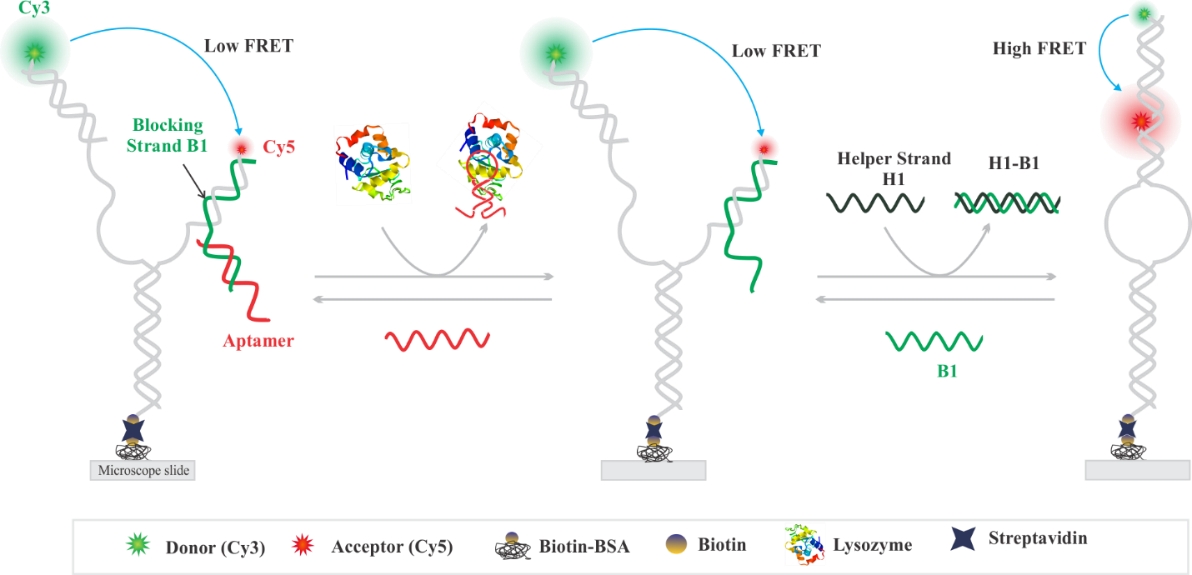Among different nanomaterials, magnetic nanoparticles (MNPs), microparticles, and beads are unique in offering facile conjugation of biorecognition probes for selective capturing of any desired analytes from complex sample matrices such as whole blood, serum, urine, saliva and tissues. The immobilization of aptamer probes on MNPs provides numerous advantages since the interaction of the DNA/RNA probe with the target analyte occurs in suspension, exploiting an enhanced active surface under mechanical stirring and temperature control. Moreover, rapid separation of the particle-captured analytes by the simple use of a magnet for subsequent detection on a sensor unit makes the magnetic particle sensor approach very attractive.
Rationale for the Selection
When the analyte concentration is large enough and can be selectively visualized by the naked eye by a color reaction, the colorimetric detection is advantageous. For ultra-low detection limits, fluorescence, luminescence, and surface-sensitive optical methods have been developed using magnetic nanomaterials.
Application
MNPs-based biosensors have enabled ultra-low detection with ultra-high sensitivity. MNPs-incorporated sensing strategies enabled sample concentration into a defined microvolume of large surface area particles for a straightforward detection. Nowadays, MNPs have been utilized successfully in the separation and biosensing of DNA, proteins, viruses, and cells.
Example
Qualitative and quantitative determination of lysozyme concentrations in urine and serum with high selectivity and sensitivity is important for diagnosing the progression of several diseases. A MNPs-based aptasensor was designed to specifically recognize and efficiently capture lysozyme with high selectivity. An anti-lysozyme aptamer was firstly conjugated to MNPs. Lysozyme was specifically captured and enriched by MNPs-aptamer to form a MNPs-aptamer-lysozyme complex, while the other co-existing substances were easily washed. Since lysozyme is quite different from other proteins owing to its high isoelectric point of approximately 11.1, its positively charged nature at physiological pH makes it available to enrich numbers of negatively charged probes, while the other proteins cannot.
 Fig.1 Aptasensor principle for sensitive lysozyme detection.1
Fig.1 Aptasensor principle for sensitive lysozyme detection.1
Creative Biolabs provides magnetic-based aptasensor development service for global clients according to specific demands. If you are interested in our services, please feel free to contact us for more information.
Reference
- Sapkota, Kumar, and Soma Dhakal. "FRET-based aptasensor for the selective and sensitive detection of lysozyme." Sensors 20.3 (2020): 914. Distributed under Open Access license CC BY 4.0, without modification.
For Research Use Only.

